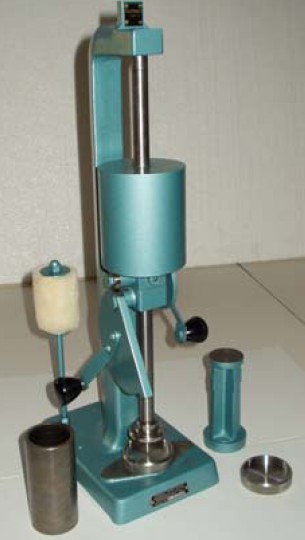| 1 편 주 조 |
|---|
|
주형사 시험용 표준시편 제작기
|
|
 |
|
|
The Density Indicator is designed to be mounted on top of the Sand Rammer. The position of the pointer is controlled by the length of the rammed sand specimen. Three scales are engraved on a curved plate, two of which indicate density in kilograms per cubic metre, one from 1400 to 1800 kilograms per cubic metre when a 157 gram weight of sand is used and the other reading from 1280 to 1650 kilograms per cubic metre, when a 143 gram sample weight is used. The third (central) calibration indicates the exact weight (in grams) of sand needed to form a 50 mm diameter x 50 mm height specimen after ramming a sand specimen weighing 157 grams. The Density Indicator is secured to the metric Sand Rammer by means of two screws provided, using the two tapped holes on the back of the lug on which the tolerance scale is mounted. It is positioned correctly by placing the 50 mm gauge block provided, on a pedestal cup and lowering the ram end on to it. The main arm and the indicating pointer should then be approximately parallel. Final adjustment is made by slackening the three domed nuts behind the scale and moving it until the pointer indicates exactly 50 mm on the scale.
Test procdure:
|
|